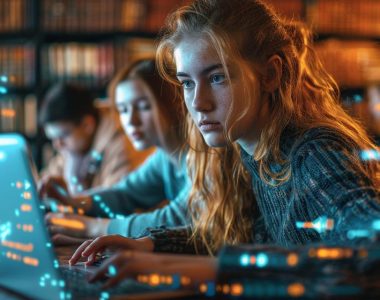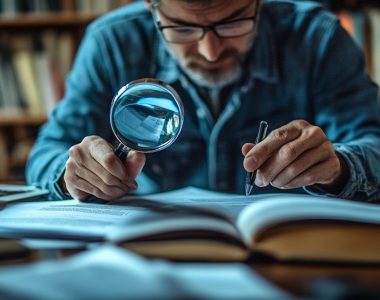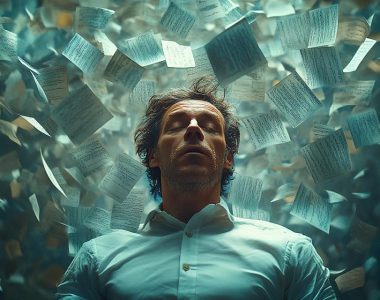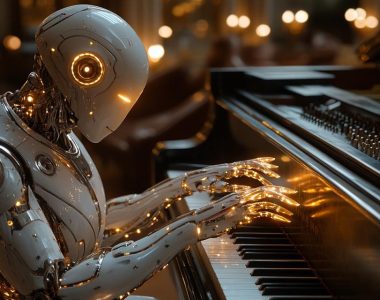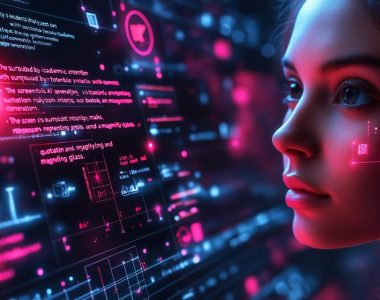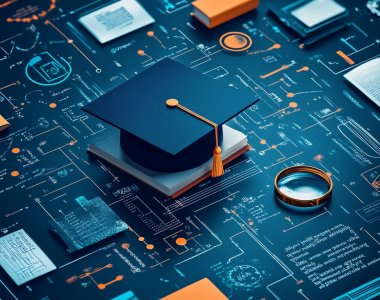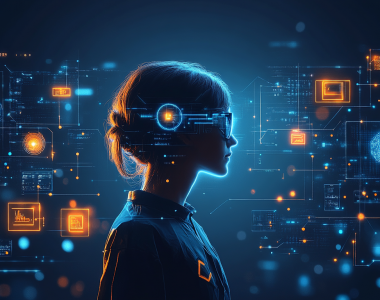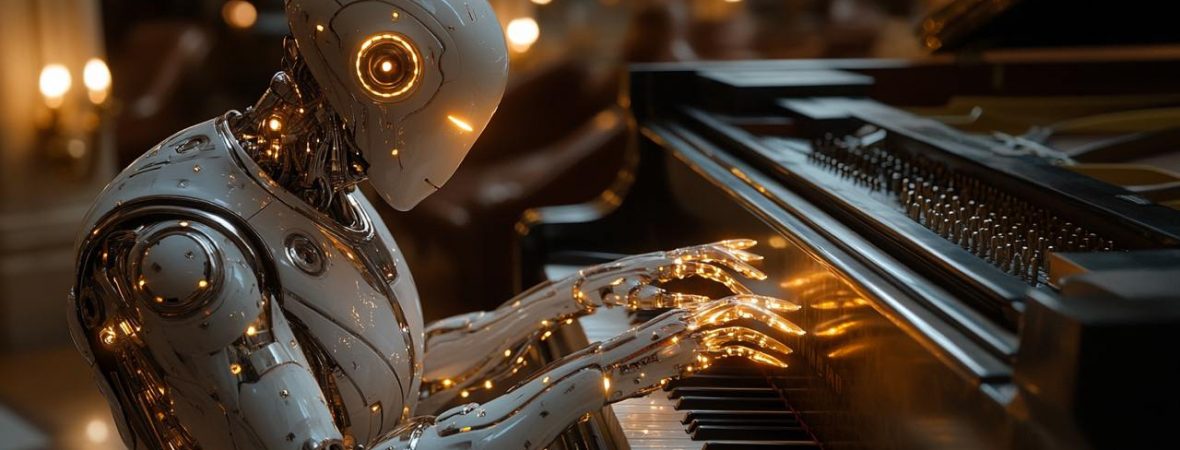
La creatividad ha sido considerada durante mucho tiempo como una característica única de los seres humanos. Sin embargo, en la actualidad ha emergido un nuevo aliado. La inteligencia artificial ha reemplazado a los humanos en muchas áreas. La IA está penetrando rápidamente en ámbitos que antes se consideraban exclusivos de la inventiva humana. En los últimos años, herramientas como las redes generativas antagónicas (GAN) y las plataformas de diseño impulsadas por IA han permitido a las máquinas componer música, escribir poesía e incluso crear diseños arquitectónicos. A menudo, estos programas producen resultados que nos obligan a replantearnos nuestras nociones de originalidad y autoría.
Esta evolución tecnológica está comenzando a generar preguntas sobre el futuro de la creatividad en sí misma. Algunos expertos citan la IA como una herramienta que reduce las barreras para la expresión artística. Sin embargo, otros temen que pueda empobrecer la autenticidad del arte creado por humanos. Cada vez más industrias comienzan a adoptar el uso de la inteligencia artificial, lo que intensifica el debate. La gente se pregunta si la IA puede reemplazar la creatividad humana.
Definiendo la Creatividad: Humano vs. IA
Especialistas de diferentes campos han definido la creatividad de distintas maneras. Psicólogos como J.P. Guilford distinguen el término como la capacidad de generar ideas inesperadas. Subrayan que la verdadera creatividad requiere originalidad y valor, es decir, resolver un problema o evocar una emoción. Los filósofos definen el término como un acto profundamente humano de creación de significado. Mientras tanto, la neurociencia define el término como una interacción dinámica de redes cerebrales. Según su enfoque, la creatividad se manifiesta cuando la red de modo predeterminado interactúa con la red de control ejecutivo. Estas redes están moldeadas por emociones, recuerdos y el contexto cultural.
En su núcleo, la creatividad humana es inseparable de la experiencia corporal: las alegrías, los traumas y las ambigüedades de la vida. Estas nutren el arte, la música y la innovación con autenticidad. Está impulsada por la curiosidad, la intuición y el deseo de conectar, cuestionar o trascender.
Si consideramos la inteligencia artificial y la creatividad, la IA aborda la creatividad a través de una perspectiva fundamentalmente diferente. La IA se caracteriza por el cálculo y la falta de consciencia. Los sistemas modernos de IA como GPT-4, DALL-E o los algoritmos de composición musical se basan en tres pilares:
- Reconocimiento de patrones. La IA analiza vastos conjuntos de datos (millones de pinturas, canciones o textos) para identificar patrones estadísticos.
- Generación basada en datos. Herramientas como GANs o transformadores producen contenido nuevo recombinando patrones aprendidos.
- Aprendizaje profundo. Algunos sistemas de IA utilizan el aprendizaje por refuerzo para priorizar salidas “sorprendentes”. Sin embargo, este modelo se mide en relación con los datos de entrenamiento, no con la experiencia vivida.
El principal punto de diferencia entre la inteligencia artificial y la creatividad humana es que, mientras que la inteligencia artificial puede imitar resultados creativos, como escribir un soneto, diseñar un logotipo o componer una melodía, lo hace sin intención, emoción ni conciencia. Su “creatividad” es una mezcla matemática de probabilidades. Pero la creatividad humana involucra emoción, intuición y experiencia de vida.
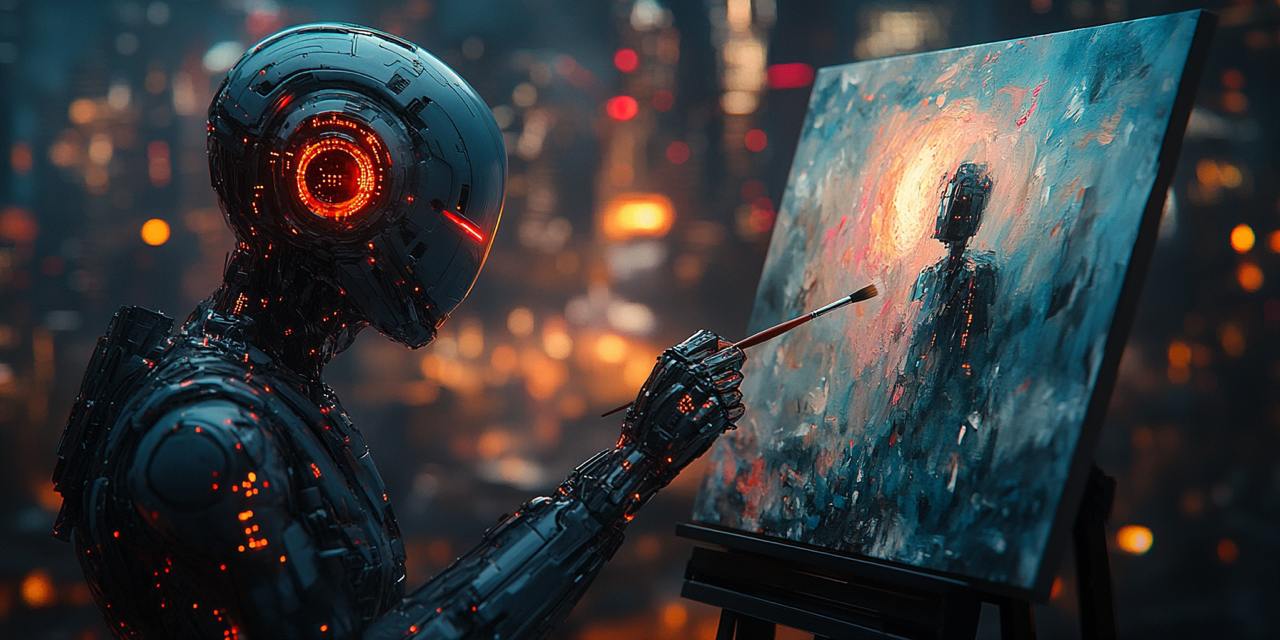
¿Cómo Mejora la IA la Creatividad Humana?
La IA es una herramienta efectiva no para reemplazar a los humanos, sino para potenciar sus capacidades de pensamiento. Aquí algunos grandes ejemplos de algoritmos y humanos trabajando juntos en industrias creativas:
- Escritura asistida por IA (ChatGPT, Jasper). Stephen Marche escribió Death of an Author utilizando inteligencia artificial para mezclar estilos literarios, generando un debate sobre el uso de la inteligencia artificial en la narración de historias. Los equipos de marketing utilizan Jasper para generar variantes de copias publicitarias, probar mensajes A/B y localizar contenido para audiencias globales.
- Arte generado por IA (DALL·E, Midjourney). Los diseñadores gráficos usan la inteligencia artificial para generar ideas para logotipos, empaques o imágenes de marca. Por ejemplo, Nutella utilizó inteligencia artificial para crear millones de diseños únicos para latas, cada uno personalizado algorítmicamente para adaptarse a las estéticas regionales. El cineasta Paul Trillo utilizó Midjourney para crear guiones gráficos para The Frost, acelerando la preproducción mientras mantenía el control artístico.
- Composición musical con IA (AIVA, Amper Music). La compositora Taryn Southern creó I AM AI, el primer álbum coproducido con IA, utilizando Amper para experimentar con sonidos de fusión de géneros. Los estudios de videojuegos emplean AIVA para generar bandas sonoras adaptativas que responden a las acciones de los jugadores en tiempo real.
¿Puede la IA reemplazar la creatividad humana? Esta probabilidad es baja, pero no nula. Estos ejemplos resaltan el papel de la IA como catalizador, no como competidor. Al externalizar tareas rutinarias y proporcionar una nueva perspectiva, la IA permite a las personas concentrarse en lo que mejor saben hacer: infundir trabajo con emoción, intención y resonancia cultural.
Limitaciones de la IA en la Creatividad
Con la inteligencia artificial, hay más oportunidades para crear arte, música y textos. Pero su potencial creativo sigue siendo limitado. Esto significa que la inventiva humana sigue siendo necesaria. ¿Cuáles son las desventajas de la IA?
- Falta de originalidad verdadera. La inteligencia artificial responde a consultas basadas en patrones y tendencias existentes. En pocas palabras, no crea nada nuevo; simplemente procesa información existente creada por el ser humano.
- Ausencia de profundidad emocional y experiencia subjetiva. El contenido generado se basa en probabilidades matemáticas; no se incluyen emociones ni sentimientos humanos.
- Preocupaciones éticas. El contenido generado por IA se basa en otras obras, lo que puede dar lugar a debates sobre la autoría y la autenticidad.
- Sesgo y dependencia de los datos. La IA está limitada por los conjuntos de datos con los que se entrena.
¿Puede la IA Reemplazar la Creatividad Humana?
La pregunta de si la IA puede reemplazar la creatividad humana no es binaria. Depende de cómo definamos la “creatividad” en sí misma. Los defensores del potencial disruptivo de la IA argumentan que las máquinas ya están remodelando industrias, mientras que los escépticos insisten en que la creatividad humana sigue siendo insustituible. A continuación, analizamos ambos lados de este debate.
La capacidad de la IA para generar contenido a gran escala, automatizar tareas creativas e imitar estilos artísticos son los principales argumentos a favor del reemplazo. Estos puntos demuestran que la IA es capaz de crear contenido de alta calidad sin la participación humana.
Sin embargo, los principales argumentos en contra del reemplazo incluyen que la creatividad es profundamente humana y está vinculada a las emociones, la consciencia y la cultura. Los algoritmos sin alma no pueden crear contenido de calidad, ya que no pueden percibir los matices del trabajo requerido.
Detección de Texto Generado por IA con Advacheck
En el creciente panorama del contenido generado por IA, distinguir entre texto creado por humanos y por IA es crucial. Advacheck ofrece un detector de texto de IA que identifica con precisión el contenido generado por IA, ayudando a mantener la autenticidad y originalidad en las obras creativas. Ya seas artista, escritor o creador de contenido, usar Advacheck puede garantizar la integridad de tu contenido. El software tiene los siguientes beneficios:
- Asegura la autenticidad y originalidad de tus materiales.
- Es ideal para redactores, especialistas en marketing, estudiantes, investigadores y creadores de contenido.
- Brinda confianza en la integridad de tu contenido.
Si miramos hacia el futuro y tratamos de predecir las tendencias y cambios en la relación entre la IA y la creatividad humana, lo más probable es que la IA co-cree con los humanos. La probabilidad de un reemplazo total del ser humano por inteligencia artificial es baja. Los artistas, escritores y diseñadores implementarán herramientas de IA en sus flujos de trabajo cotidianos y adaptarán algoritmos para simplificar y agilizar la creación de contenido.
Si consideramos la creatividad de la inteligencia artificial, no cabe duda de que la IA es una herramienta poderosa para la creación de contenido. Sin embargo, no puede replicar completamente el potencial creativo de los seres humanos. La IA es un asistente eficaz para los humanos, que puede simplificar el proceso de creación de contenido nuevo. Se espera que la interacción entre los humanos y la inteligencia artificial evolucione en el espacio creativo, llevando a nuevas combinaciones.

